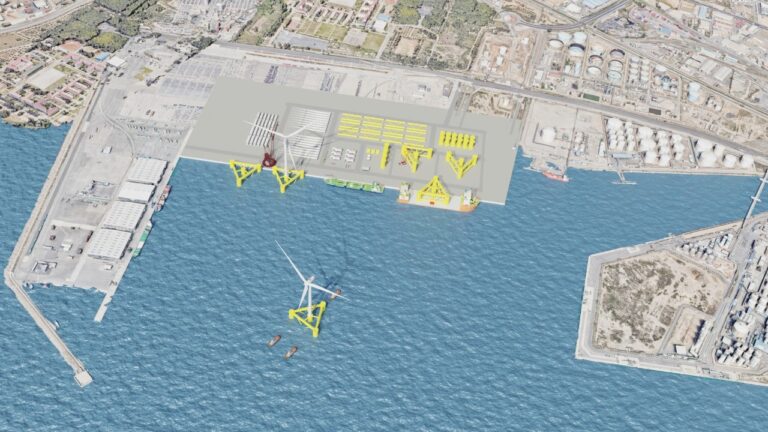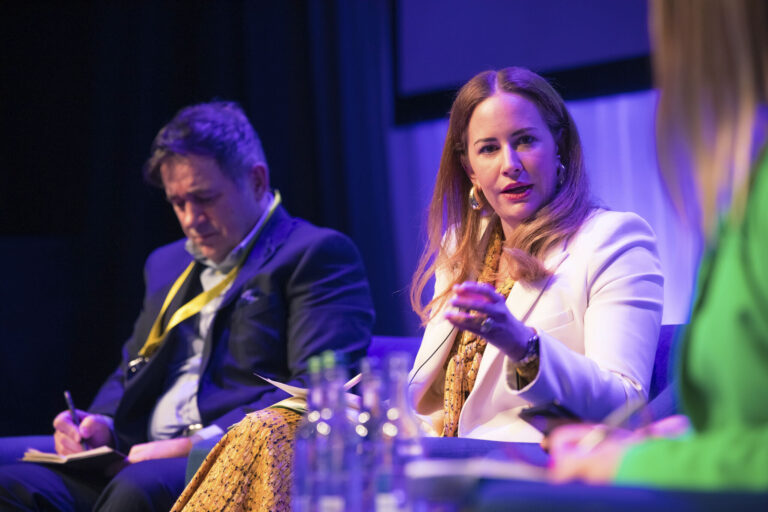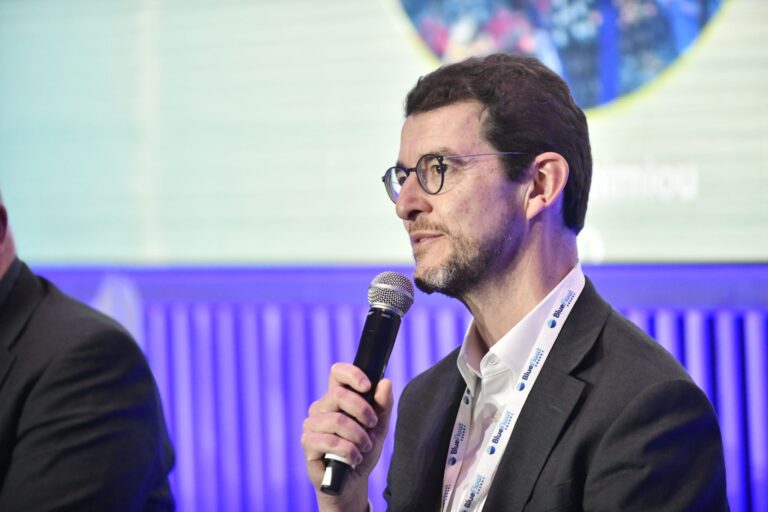Floating offshore wind technology is often referred to as the new frontier of energy transition due to its capacity to harness wind resources in deep waters where traditional fixed-bottom installations were not feasible. Yet this fast-evolving sector faces significant challenges. One recurrent concern is how to transition from prototype and pilot projects to large-scale commercial deployment.
The global floating wind industry is still in a nascent stage, characterized by small-scale operational projects and limited production capacity to supply a large pipeline of commercial projects. While Europe has led the charge in technological innovation and pilot initiatives, the maximum production capacity could be currently estimated at 20-30 floaters per year. The imperative now is to scale up production at least tenfold to meet the demand for renewable energy with floating wind.
How do we transition from producing a handful of units annually to delivering projects on a commercial scale, exceeding 500 megawatts per project? This transition requires a fundamental shift in approach, including not only technological advancements but also the optimization of supply chain strategies and the forging of robust partnerships across the globe.
BlueFloat Energy’s answer to Supply Chain Strategy in Floating Wind
BlueFloat Energy has always defended that floating wind is fundamentally different that fixed-bottom offshore wind and requires specific solutions to unique challenges. Leveraging on the collective experience from a team that has worked in 21 floating wind projects and prototypes in different companies worldwide, our supply chain strategy is based on the following key principles:
- Unit costs are paramount, but production volume and quality are equally important. This can only be achieved by using existing facilities that require limited investment to adapt means of manufacturing and already can offer the required qualified workers
- Think globally, act locally: BlueFloat Energy recognizes the importance of tapping into local and regional capabilities and tailoring our approach to each market’s unique needs while not losing sight of the global supply chain opportunities and bottlenecks.
Based on these principles, BlueFloat Energy is undergoing an extensive market analysis on a global basis, with particular focus on a regional and local perspective to preselect the most suitable contractors and suppliers, aiming at building up the most efficient execution strategy.
This effort is part of a supply chain strategy encompassing several key elements:
1. Global Supply Chain for Platform Components: At BlueFloat Energy, we are committed to securing a global supply of components to drive efficiency and scalability. Rather than limiting ourselves to sourcing components from a specific region, such as Europe, we strategically leverage capabilities from diverse regions to optimize volume and costs. The Asia Pacific (APAC) and Middle East regions are poised to play crucial roles in our global supply chain strategy for floating wind. Recently, our colleagues Alper Esin and Walid Oulmane had the opportunity to share our insights at the “Floating Wind Japan 2024” conference in Tokyo. This proactive engagement underscores our commitment to fostering international collaboration and driving innovation in the floating wind industry.
2. Regional/Local Platform Assembly: If platform components can be supplied globally, they must be assembled in the region closer to our floating projects. BlueFloat is actively engaged in opportunities for regional and local assembly to leverage local capabilities and stimulate job creation. Provided selected technologies allow for a fast and efficient final assembly, this approach not only streamlines production processes accelerating project timelines but also fosters closer collaboration with local partners and stakeholders, thereby supporting regional economies.
3. Ports developments: Ports constitute a key element in our supply strategy. BlueFloat Energy is collaborating with turbine OEMs, floaters designers and maritime operators to define an efficient port strategy. As part of these efforts, BlueFloat Energy has visited over 60 ports worldwide and is also discussing with more than 150 contractors to assess their suitability to execute our projects under development.
Delivering on this vision will require a mobilized and concerted effort across the entire ecosystem, including suppliers along the entire value chain, ports, developers, financial entities, and policy makers. At BlueFloat Energy we are committed to leading the way by proactively addressing floating wind challenges through innovation, bringing together different perspectives, and harnessing collective expertise.



